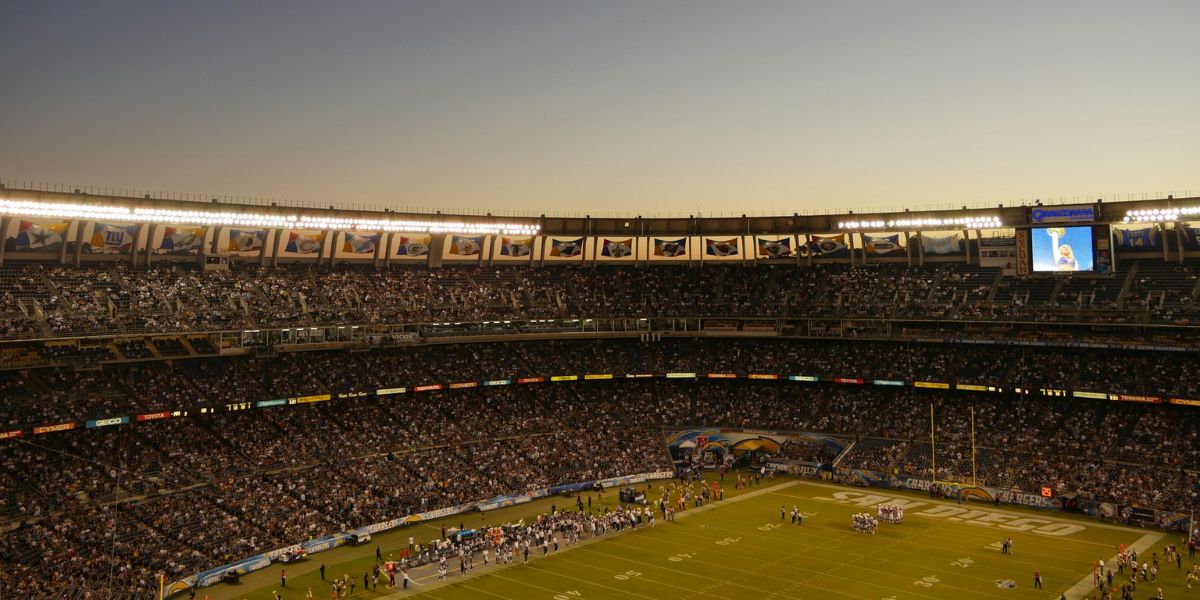How Early-Season Football Spreads Compare to Late-Season Trends

Spread betting is one of the most popular ways to wager on NFL games, as it levels the playing field between teams of varying strengths. But how do early-season spreads compare to late-season trends?
With an estimated $35 billion in NFL bets placed in 2024 alone, understanding how spreads evolve throughout the season is more important than ever for bettors and analysts alike.
What Are NFL Spreads and How Do They Work?
NFL spreads are designed to predict the margin of victory between two teams. This creates a more balanced betting field, regardless of whether a strong team plays a weaker one.
Let’s break it down:
- Football spreads are typically set by oddsmakers who analyze a wide range of performance indicators—such as recent team form, injury reports, and even advanced metrics—to encourage balanced wagers on both sides.
- Favorite vs. Underdog: The favorite is the team expected to win, with a negative spread (e.g., -3). The underdog is expected to lose, with a positive spread (e.g., +3).
- Covering the Spread: If they win by a larger margin than the spread, a favorite "covers." If an underdog loses by fewer points than the spread or wins by a margin of victory, they cover.
- Pushes: If the game ends exactly on the spread (e.g., a 3-point win with a -3 spread), all bets are refunded. To avoid this, sportsbooks often use half-points (e.g., -3.5).
Historically, home teams are favored in about 63% of games (2014-2023), with an average spread of -5.6 points. When the away team is favored, the average spread drops slightly to -4.6 points. However, home teams only covered the spread 46% of the time, while away favorites covered 49% of the time.
How Do Early-Season NFL Spreads Compare to Late-Season Trends?
In the early weeks of the NFL season, spreads tend to be less accurate. From 2014-2023, data shows that spreads overpredicted the margin of victory by about 1 point in Week 1. This bias gradually diminishes, improving by approximately 0.1 points per week as sportsbooks gather more data.
Looking at the first four weeks of the 2024 NFL season, the trend holds:
- Favorites covered the spread in 27 games.
- Favorites failed to cover in 35 games.
- 2 games ended in a push.
On average, the margin of victory was 1.7 points below the spread, indicating that sportsbooks overestimated how dominant favorites would be early on.
Late-Season Spread Accuracy
As the season progresses, spreads become more precise. By mid-to-late season, sportsbooks have access to richer data, including team performance trends, injuries, and head-to-head matchups. This allows for better predictions of game outcomes.
Additionally, bettor behavior plays a role. In the early season, public perception often inflates spreads for popular teams. By late season, sportsbooks adjust to reflect actual team performance, leading to more accurate lines.
Why Do Spreads Shift Throughout the Season?
Data Availability
Early-season spreads rely on limited information, such as preseason performance, roster changes, and coaching updates. As the season progresses, sportsbooks adjust spreads based on actual team performance, injuries, and other key factors.
Bettor Behavior
Sportsbooks aim to maximize profits, not necessarily to predict outcomes perfectly. Research shows that spreads are influenced by public perception and betting trends. For instance, popular teams like the Dallas Cowboys or Kansas City Chiefs often have inflated spreads early in the season due to heavy betting on them.
Market Dynamics
From 2014-2023, closing lines moved toward the favorite in 43.82% of games and toward the underdog in 31.82% of games. This suggests that early bets on favorites may offer value, while late bets on underdogs could be more profitable.
Betting Strategies for Early vs. Late-Season NFL Spreads
Understanding how spreads shift throughout the season can help bettors develop smarter strategies:
Early-Season Strategies
- Target Undervalued Underdogs: Early-season spreads often overvalue favorites, creating opportunities to bet on underdogs.
- Use Preseason Data: Analyze training camp and preseason performance to identify teams that may outperform expectations.
- Avoid Public Bias: Be cautious of spreads inflated by public perception of popular teams.
Mid-to-Late-Season Strategies
- Analyze Trends: Look at team-specific trends, such as home/away splits, injury reports, and over/under results.
- Spot Outliers: Focus on spreads that deviate significantly from historical performance or recent trends.
- Bet on Underdogs: Late-season lines often favor favorites, making underdogs a potential value play.
Arbitrage Opportunities
- Take advantage of sportsbooks’ tendency to overvalue favorites early in the season.
- Look for line movement closer to game day, especially when betting on underdogs.
Insights from the 2024 NFL Season
The 2024 NFL season has already shown patterns consistent with historical trends. In the first four weeks:
- Favorites covered in 27 games, failed to cover in 35 games, and 2 games ended in a push.
- The margin of victory averaged 1.7 points below the spread, showing early-season overprediction.
These insights reinforce the importance of adapting betting strategies throughout the season to account for evolving trends.
Gaining an Edge Through NFL Spread Trends
Early-season NFL spreads often overvalue favorites, while late-season spreads become more accurate due to better data and analysis. By understanding these trends, bettors can make more informed decisions, whether targeting undervalued underdogs early or analyzing team performance trends mid-to-late season.
With billions of dollars at stake, leveraging spread dynamics is key to gaining an edge in NFL betting.
Please note that some links in this article may be sponsored or contain affiliate content.